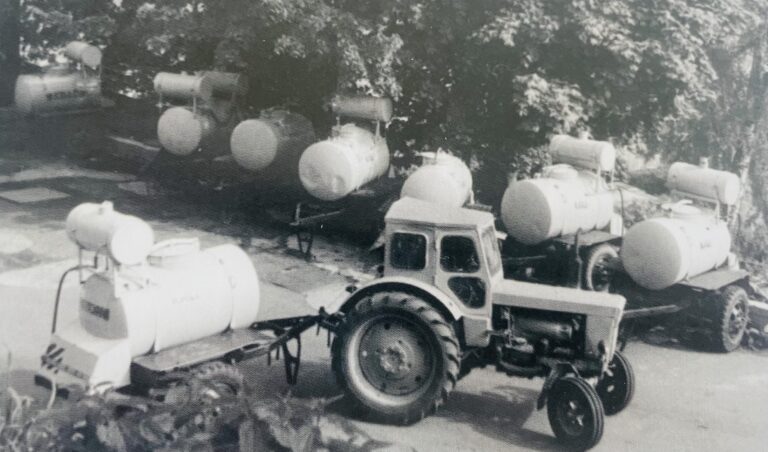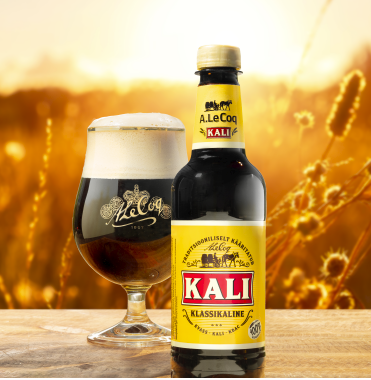
The Story of Kvass
Kvass has been produced in these lands for centuries, both for special occasions and for quenching everyday thirst. The production of kvass went hand in hand with brewing among the ancient Estonians. The leftover wort from brewing, called “õlleraba,” was washed and used to make kvass. The strongest and best beer was obtained on the first round of washing the wort, while subsequent rounds produced weaker beer, and finally, the remaining residue was used to make kvass.
However, the drink that still evokes nostalgia in us became popular during the Soviet era when kvass production experienced significant growth. One reason for this was the lack of strict requirements for making kvass. While brewing beer was under strict control, various food industries (such as bread factories) were allowed to produce kvass for their own use or for resale. The traditional fermented kalis that we know are still made from special rye and barley malts, which give kvass its characteristic color and flavor.
The production of barrel kvass started in A. Le Coq (formerly Tartu Brewery) in the summer of 1950. For years, it was made by fermenting cooked wort from rye and barley malt loaves. Rye malt was produced on-site, and in 1961, two electric ovens were set up for baking the malt loaves. The ground loaves and malt were mixed with water and left to ferment. Kvass was fermented using regular beer yeast and lactic acid bacteria.
The finished drink had a moderate alcohol content, around 0.5% when leaving the factory. It was required to be sold within 48 hours, during which the alcohol content should not exceed 2%. If, on rainy days, some tanks had kvass fermenting for longer, it was not a problem. Fresh wort was simply added to the tanks in the factory, and sales continued. Although it may seem somewhat peculiar today, such a practice was completely permissible according to the regulations of that time.
In 1966, they switched to using malt concentrate, making the process simpler and allowing for more production of the popular summer drink. Kvass was sent for sale in 800-liter yellow tanks, easily recognizable from a distance. Above the tank, there was a 100-liter water tank, which the kvass sellers used to rinse the jugs with cold water after use.

There were always buyers for fresh kvass, and the most enthusiastic ones took it home in various containers. Thirsty customers could gulp down half-liter (6 kopeks) or quarter-liter (3 kopeks) glass jugs on the spot. The record for kvass sales was set in 1975 when a staggering 20,000 liters of this delightful drink were sold on a hot summer day.
In 1978, the brewery was ready to offer up to 150,000 liters of kvass annually to quench people’s thirst. However, in reality, only a third of that amount was produced because the commercial organizations struggled with organizing sales. Schoolchildren were enlisted to help, and they had a nice opportunity to earn money as kvass sellers during the summer. The peak of barrel kvass production was in 1983 (680,000 liters). In the early 1990s, fermented kvass production was discontinued, and all the remaining kvass extract in the factory was sold in three-liter jars. Kvass disappeared from the Estonian market.
In 1998, Latvian kvass in plastic bottles arrived in Estonia as a nostalgic product. Immediately, the local kvass drink, Linnuse kvass, was introduced to the market by AS Ösel Foods.
A. Le Coq (formerly Tartu Brewery) resumed the production of kvass drinks in 2002. The first to reach the stores was Estonian kvass, followed by Rehepapi kvass in 2004, and in the spring of 2006, Linnasekvass made from barley and rye malt extract, the first of its kind in a half-liter jar. However, all of these kvass drinks were based on the principles of soft drink production and were kvass-like products.
In 2009, A. Le Coq revived the tradition of producing authentic fermented kvass. In the first four months, a total of 1.5 million liters of kvass were sold, surpassing all historical records. A. Le Coq’s Kvass is still the most popular due to its taste characteristics – it is a genuine naturally fermented kvass.
How to produce Kvass
The roots of the classical kvass production method can be traced back in Estonian culture, and that’s exactly how our kvass is made.
Decades ago, kvass was made at home using birch sap, bread, berries, fruits, and dried ingredients. Brewing kvass from wort was just one method among the old Estonians, and reportedly there were even fifty different kvass varieties at that time.
Kvass production consists of several different stages. In many ways, it is similar to beer production, particularly in the stages of wort preparation and fermentation, which attest to the natural essence of kvass. Delicious kvass is produced through a production process that lasts at least four days.
Firstly, wort preparation takes place, which lasts for approximately 8-10 hours. The wort is made from rye and barley malt, as well as sugar.
Next is the fermentation of the kvass wort, which takes a total of 10 hours. For fermentation, yeast and lactic acid bacteria are added to the kvass wort, just as it has been done for ages in kvass fermentation. During kvass fermentation at A. Le Coq, the conversion of sugars into alcohol is carefully monitored, ensuring that the alcohol content does not exceed 0.3%, which is lower than the legal limit for kvass today. Thus, one can confidently consume kvass and get behind the wheel.
Afterward, the kvass wort is cooled and clarified, a process that lasts for a total of 48-60 hours. In this process, the fermented wort is cooled to zero degrees and kept at a low temperature for nearly two days. The low temperature halts the fermentation process, and the yeast and lactic acid bacteria added for fermentation settle to the bottom. This technology also controls the presence of alcohol, keeping it within the set limits of below 0.3%.
Following the clarification process, a preparation process of about two hours ensues. During this process, the taste of the kvass is adjusted by adding water or sugar as needed. This is how the final flavor of the kvass is achieved.
Before bottling, the clarified kvass undergoes a filtering process lasting two to four hours, which is necessary to make the kvass transparent and visually appealing. In this process, any remaining sediment that has settled in the kvass before bottling is removed.
Finally, the kvass is bottled. During the bottling process, the kvass is first pasteurized and then lightly carbonated.
A beverage produced using this technology can be called genuine fermented kvass.
The classic method has been used in the production of A. Le Coq Klassikaline (Classic) and A. Le Coq Tume (Dark) kvass, as well as A. Le Coq Imperial Kvass.
Kvass vs. Kvass-like Beverages
In stores, there are two types of beverages labeled as kvass. The first group consists of naturally fermented kvass made with yeast, while the second group includes kvass-like flavored beverages.
But how is authentic kvass made?
Authentic kvass is made through the natural fermentation of wort made from rye and barley malt using yeast and lactic acid bacteria. The resulting kvass wort is aged, filtered, and before bottling, a small amount of carbon dioxide is added to enhance the thirst-quenching properties of the finished drink. All the vitamins and minerals naturally present in rye and barley malts are retained in the beverage, making authentic kvass a healthy and natural drink.

But how are kvass-like beverages made?
Kvass-like flavored beverages are made similarly to other soft drinks. Flavors and aromas are added to water, mixed with sugar syrup, and during bottling, carbon dioxide is added to carbonate the drink. Apart from a slightly similar taste, they have nothing in common with true and traditional kvass.
Benefits of Authentic Kvass
Compared to other soft drinks, naturally fermented kvass has several advantages. Since kvass is made from plant-based ingredients, it contains significant amounts of potassium. Unlike other soft drinks, kvass contains small amounts of valuable amino acids and proteins, mainly derived from rye and barley malts used in its production. Authentic kvass also contains natural B-group vitamins present in the raw ingredients, and the yeast used for fermentation further enriches the drink with additional B-group vitamins. Since fermentation is a step in kvass production, where sugar is converted into low amounts of alcohol, the drink is significantly lower in calories compared to other soft drinks.
